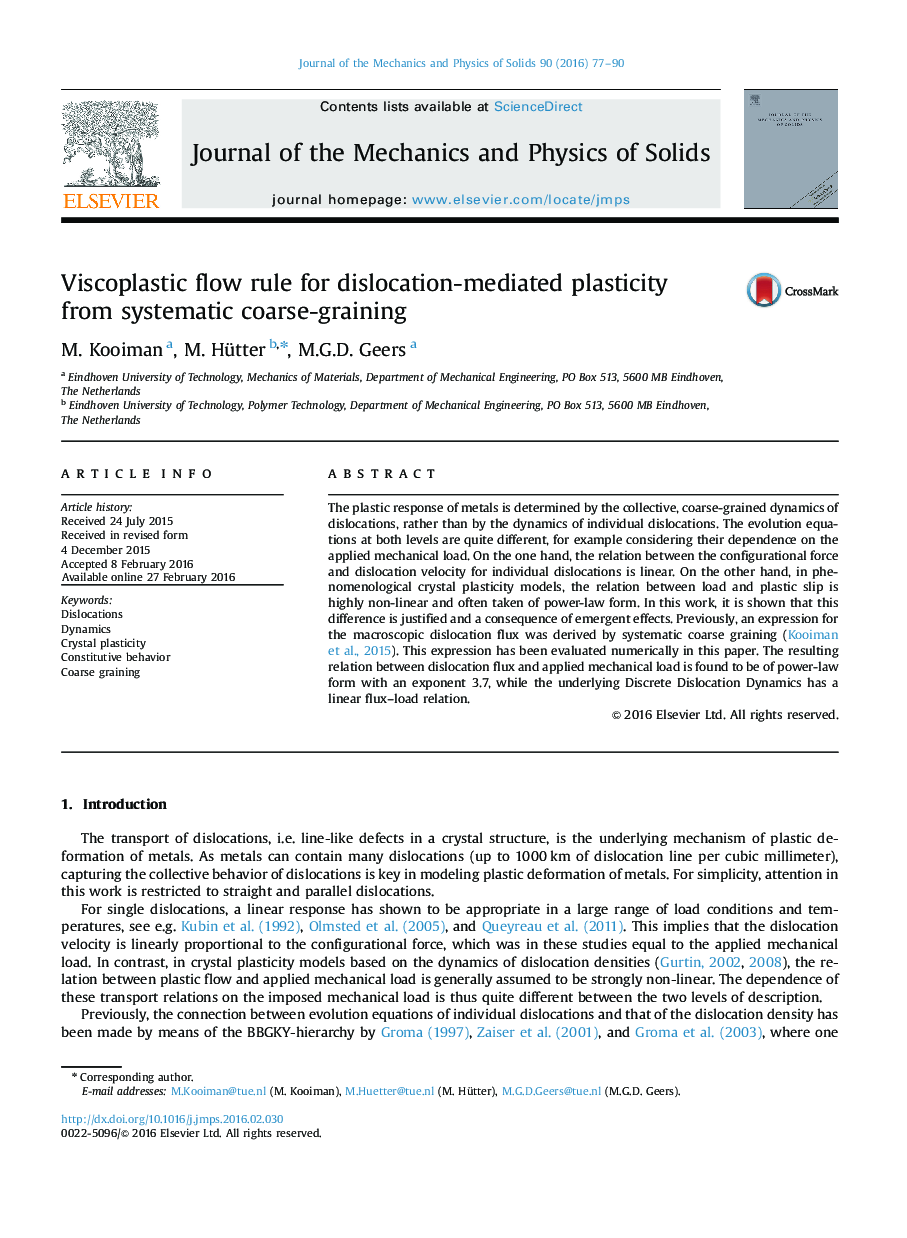| Article ID | Journal | Published Year | Pages | File Type |
|---|---|---|---|---|
| 797777 | Journal of the Mechanics and Physics of Solids | 2016 | 14 Pages |
The plastic response of metals is determined by the collective, coarse-grained dynamics of dislocations, rather than by the dynamics of individual dislocations. The evolution equations at both levels are quite different, for example considering their dependence on the applied mechanical load. On the one hand, the relation between the configurational force and dislocation velocity for individual dislocations is linear. On the other hand, in phenomenological crystal plasticity models, the relation between load and plastic slip is highly non-linear and often taken of power-law form. In this work, it is shown that this difference is justified and a consequence of emergent effects. Previously, an expression for the macroscopic dislocation flux was derived by systematic coarse graining (Kooiman et al., 2015). This expression has been evaluated numerically in this paper. The resulting relation between dislocation flux and applied mechanical load is found to be of power-law form with an exponent 3.7, while the underlying Discrete Dislocation Dynamics has a linear flux–load relation.
